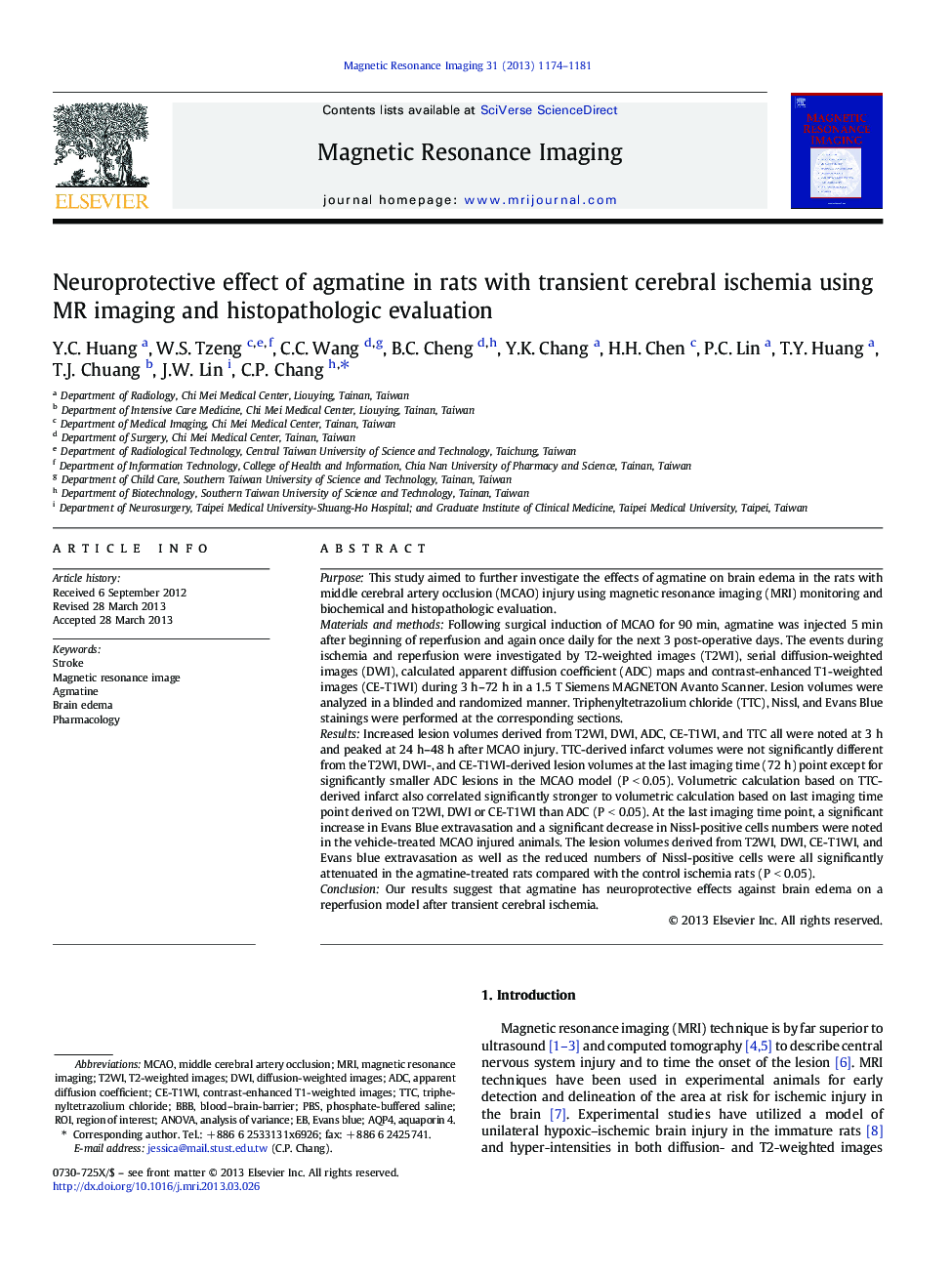| Article ID | Journal | Published Year | Pages | File Type |
|---|---|---|---|---|
| 1806662 | Magnetic Resonance Imaging | 2013 | 8 Pages |
PurposeThis study aimed to further investigate the effects of agmatine on brain edema in the rats with middle cerebral artery occlusion (MCAO) injury using magnetic resonance imaging (MRI) monitoring and biochemical and histopathologic evaluation.Materials and methodsFollowing surgical induction of MCAO for 90 min, agmatine was injected 5 min after beginning of reperfusion and again once daily for the next 3 post-operative days. The events during ischemia and reperfusion were investigated by T2-weighted images (T2WI), serial diffusion-weighted images (DWI), calculated apparent diffusion coefficient (ADC) maps and contrast-enhanced T1-weighted images (CE-T1WI) during 3 h–72 h in a 1.5 T Siemens MAGNETON Avanto Scanner. Lesion volumes were analyzed in a blinded and randomized manner. Triphenyltetrazolium chloride (TTC), Nissl, and Evans Blue stainings were performed at the corresponding sections.ResultsIncreased lesion volumes derived from T2WI, DWI, ADC, CE-T1WI, and TTC all were noted at 3 h and peaked at 24 h–48 h after MCAO injury. TTC-derived infarct volumes were not significantly different from the T2WI, DWI-, and CE-T1WI-derived lesion volumes at the last imaging time (72 h) point except for significantly smaller ADC lesions in the MCAO model (P < 0.05). Volumetric calculation based on TTC-derived infarct also correlated significantly stronger to volumetric calculation based on last imaging time point derived on T2WI, DWI or CE-T1WI than ADC (P < 0.05). At the last imaging time point, a significant increase in Evans Blue extravasation and a significant decrease in Nissl-positive cells numbers were noted in the vehicle-treated MCAO injured animals. The lesion volumes derived from T2WI, DWI, CE-T1WI, and Evans blue extravasation as well as the reduced numbers of Nissl-positive cells were all significantly attenuated in the agmatine-treated rats compared with the control ischemia rats (P < 0.05).ConclusionOur results suggest that agmatine has neuroprotective effects against brain edema on a reperfusion model after transient cerebral ischemia.
